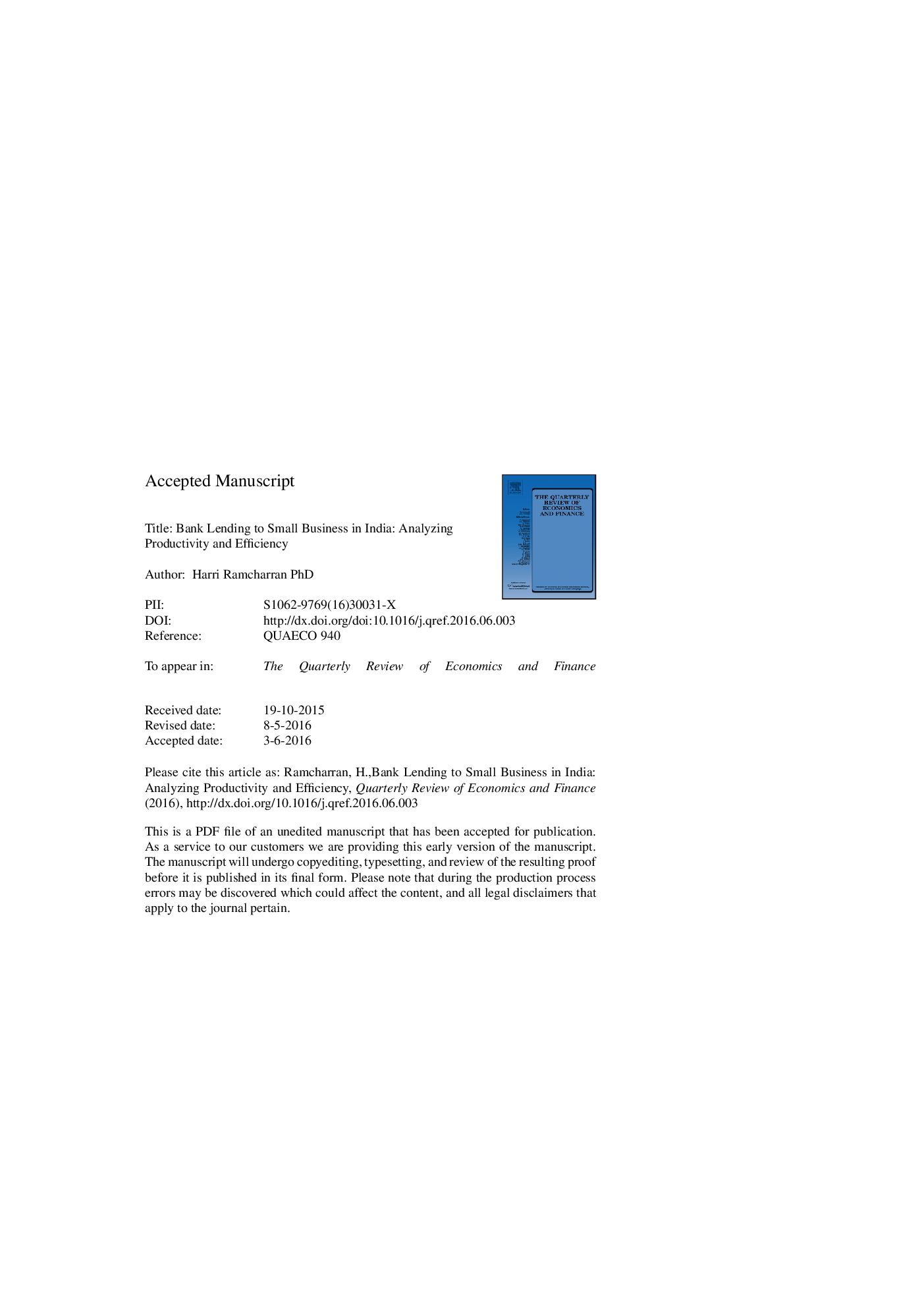| Article ID | Journal | Published Year | Pages | File Type |
|---|---|---|---|---|
| 5103542 | The Quarterly Review of Economics and Finance | 2017 | 36 Pages |
Abstract
This study extends the literature of the performance of small and medium size industries (SME) by empirically estimating the efficiency of bank loans to the SME sector of India using data from 1979 to 2013. We use a production function methodology, specifically estimating a non-homogeneous production function which, unlike other specifications, provides time varying econometric estimates of productivity, this helps to detect the impact of policy changes on efficiency overtime. The theoretical rationale for this approach is the “money as an input in the production function” argument. The results have important policy implications regarding capital allocation and risk management since bank loans are the main source of financing SME. The results indicate increasing productivity (output elasticity) of bank credit from 0.76 to 1.23; the productivity of labor is negative, but increases from â1.57 to â0.628. The sector's efficiency improved from returns to scale of â0.89 to 0.607 mainly due to the increasing productivity of bank credit. The decrease in the number of “sick” units with large outstanding debt apparently contributes to this improvement. Current problems facing the banking sector could increase borrowing cost, decrease credit availability and thus the productivity of SME. Policies to improve the skills of workers and to reduce the number of sick units are important for improving efficiency.
Related Topics
Social Sciences and Humanities
Economics, Econometrics and Finance
Economics and Econometrics
Authors
Harri Ramcharran,
